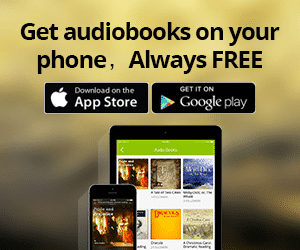
- Podcast Features
-
Monetization
-
Ads Marketplace
Join Ads Marketplace to earn through podcast sponsorships.
-
PodAds
Manage your ads with dynamic ad insertion capability.
-
Apple Podcasts Subscriptions Integration
Monetize with Apple Podcasts Subscriptions via Podbean.
-
Live Streaming
Earn rewards and recurring income from Fan Club membership.
-
Ads Marketplace
- Podbean App
-
Help and Support
-
Help Center
Get the answers and support you need.
-
Podbean Academy
Resources and guides to launch, grow, and monetize podcast.
-
Podbean Blog
Stay updated with the latest podcasting tips and trends.
-
What’s New
Check out our newest and recently released features!
-
Podcasting Smarter
Podcast interviews, best practices, and helpful tips.
-
Help Center
-
Popular Topics
-
How to Start a Podcast
The step-by-step guide to start your own podcast.
-
How to Start a Live Podcast
Create the best live podcast and engage your audience.
-
How to Monetize a Podcast
Tips on making the decision to monetize your podcast.
-
How to Promote Your Podcast
The best ways to get more eyes and ears on your podcast.
-
Podcast Advertising 101
Everything you need to know about podcast advertising.
-
Mobile Podcast Recording Guide
The ultimate guide to recording a podcast on your phone.
-
How to Use Group Recording
Steps to set up and use group recording in the Podbean app.
-
How to Start a Podcast
-
Podcasting
- Podcast Features
-
Monetization
-
Ads Marketplace
Join Ads Marketplace to earn through podcast sponsorships.
-
PodAds
Manage your ads with dynamic ad insertion capability.
-
Apple Podcasts Subscriptions Integration
Monetize with Apple Podcasts Subscriptions via Podbean.
-
Live Streaming
Earn rewards and recurring income from Fan Club membership.
-
Ads Marketplace
- Podbean App
- Advertisers
- Enterprise
- Pricing
-
Resources
-
Help and Support
-
Help Center
Get the answers and support you need.
-
Podbean Academy
Resources and guides to launch, grow, and monetize podcast.
-
Podbean Blog
Stay updated with the latest podcasting tips and trends.
-
What’s New
Check out our newest and recently released features!
-
Podcasting Smarter
Podcast interviews, best practices, and helpful tips.
-
Help Center
-
Popular Topics
-
How to Start a Podcast
The step-by-step guide to start your own podcast.
-
How to Start a Live Podcast
Create the best live podcast and engage your audience.
-
How to Monetize a Podcast
Tips on making the decision to monetize your podcast.
-
How to Promote Your Podcast
The best ways to get more eyes and ears on your podcast.
-
Podcast Advertising 101
Everything you need to know about podcast advertising.
-
Mobile Podcast Recording Guide
The ultimate guide to recording a podcast on your phone.
-
How to Use Group Recording
Steps to set up and use group recording in the Podbean app.
-
How to Start a Podcast
-
Help and Support
- Discover

Software Defined Radio offers another path to the same information.
Over the past few weeks I've been describing how some of the fundamental concepts of software defined radio work and how some of these operate and interact with each other.
You might think of some of these ideas and technologies as unrelated to the hobby of amateur radio, or not relevant to traditionally built radios.
Nothing could be further from the truth.
Before I go on, I've been trying to find more elegant terms to distinguish between radios built with mostly software and those built with mostly hardware, and I use the word mostly, because a traditional radio like my Yaesu FT857D has software on board and similarly the software defined radio Flex 6600 has traditional components inside the box.
For convenience, until I find a better distinction I'm going to refer to these as hardware radios and software radios. When I refer to a hardware radio, think Yaesu FT857D, when I say software radio, think Flex 6600.
Back to the topic at hand. The techniques used in both disciplines, hardware and software, apply to each other. So for example, a band filter might be useful in both and use similar if not identical circuitry, but a noise filter, or an audio filter like a Collins SSB or CW filter might only exist in a hardware radio and the software radio deals with the issue using little programs.
Similarly, the local oscillator in both determine the accuracy of frequency representation, but a hardware radio might require a screwdriver to adjust, where a software radio offers the adjustment functionality with a single menu option.
With my time spent on software defined radio, I'm finding that my understanding of how spectrum relates to the signal and how filters, offsets and various adjustments all relate to each other.
Don't get me wrong. The things I'm learning are perfectly able to be represented within hardware radios and the education that goes with that, what I'm saying is that they arrived for free for me with understanding the software defined radio.
Let me give you an example.
If you listen to a Morse code beacon signal on the 10m band, lets say the NCDXF beacon on 28.2 MHz. If your radio is set up correctly, you'll hear a tone as each beacon does its thing.
If you tune slightly off frequency, the tone changes, up or down, depending on how you've got your radio configured.
If you've got a Collins CW filter, you might find the whole thing vanishes if you stray too far off frequency.
Now here's the thing.
The tone you're hearing is actually dependent entirely on how far off frequency you are, so much so, that if you're entirely on frequency, you won't hear anything at all.
But you just heard me say that if your radio is set up correctly, you'll hear Morse if you're on frequency, and that's because, setting up the radio includes an offset, in a hardware radio it might be called the CW pitch, and what it does is essentially take your radio off frequency by the pitch amount.
You can test this by setting the pitch to 0 and taking the radio off frequency by say 500 Hz.
The point is that how this works and my understanding of it, came entirely from the software radio side. My training didn't include the intricacies of hardware radios, but my curiosity got me there by another path.
Another way to consider the Morse code signal is to think of it as a tone of 0 Hz. You can't hear the tone, since it's 0, but if you were to move the dial, the 0 changes into something you can hear.
While I'm at it, if you've ever wondered what's the difference is between the two CW modes on your radio, when they don't appear to do much at all?
Consider two signals, side by side, say 500 Hz apart. From a listing perspective, the station you care about is at 500 Hz and the one you don't care about is at 1000 Hz. Change to the other CW mode and the one you care about is still at 500 Hz, but the other station has moved from a 1000 Hz to 0 and it vanished.
I've spoken to many different amateurs over the years and each one learns their craft differently.
I hope that my weekly podcast adds little puzzle pieces to your mind that will over time collide with each other and end up with that elusive Ah-Ha moment that makes you smile with a tinkle in your eye and a better understanding of this amazing hobby.
I'm Onno VK6FLAB
More Episodes
 2018-01-02
2018-01-02
 2017-12-26
2017-12-26
 2017-12-23
2017-12-23
 2017-12-19
2017-12-19
 2017-12-16
2017-12-16
 2017-12-12
2017-12-12
 2017-12-09
2017-12-09
 2017-12-02
2017-12-02
 2017-11-11
2017-11-11
 2017-11-04
2017-11-04
 2017-10-28
2017-10-28
 2017-10-21
2017-10-21
 2017-10-14
2017-10-14
 2017-10-07
2017-10-07
 2017-09-30
2017-09-30
 2017-09-23
2017-09-23
 2017-09-16
2017-09-16
Create your
podcast in
minutes
- Full-featured podcast site
- Unlimited storage and bandwidth
- Comprehensive podcast stats
- Distribute to Apple Podcasts, Spotify, and more
- Make money with your podcast
It is Free
- Privacy Policy
- Cookie Policy
- Terms of Use
- Consent Preferences
- Copyright © 2015-2025 Podbean.com



